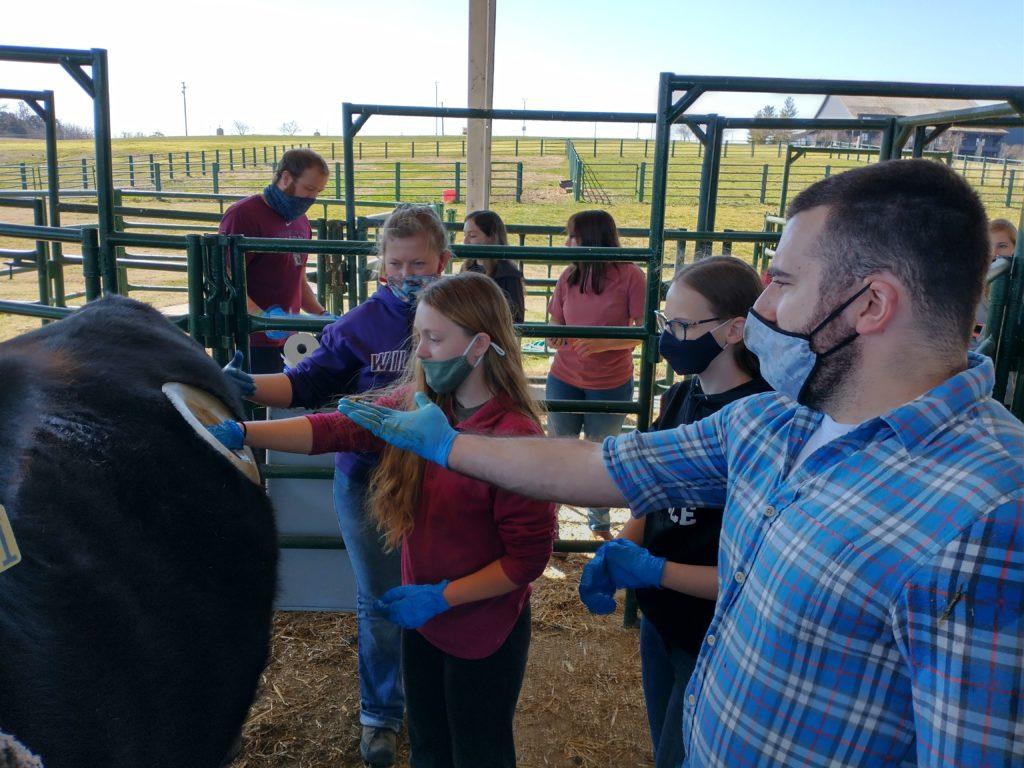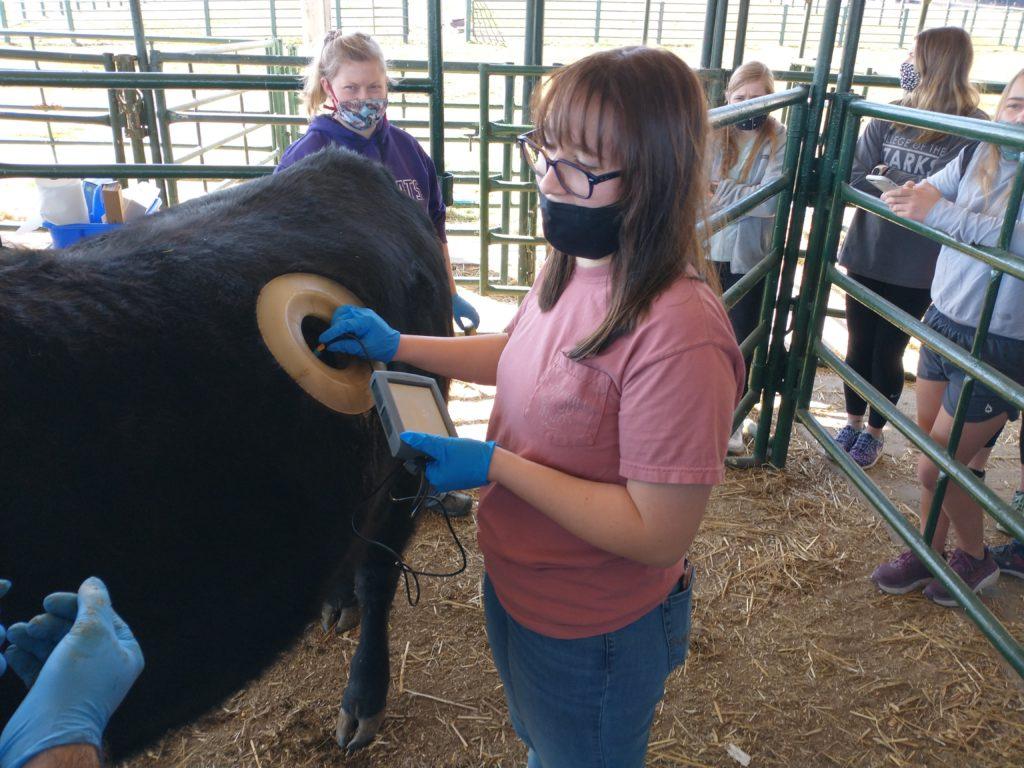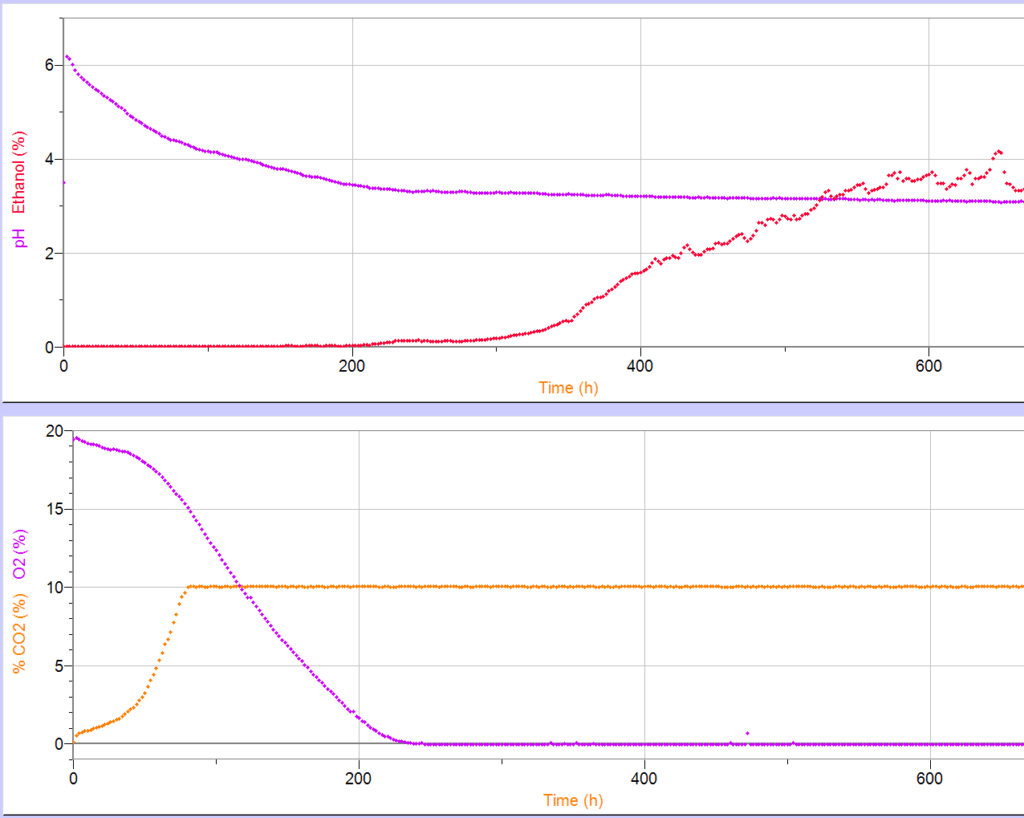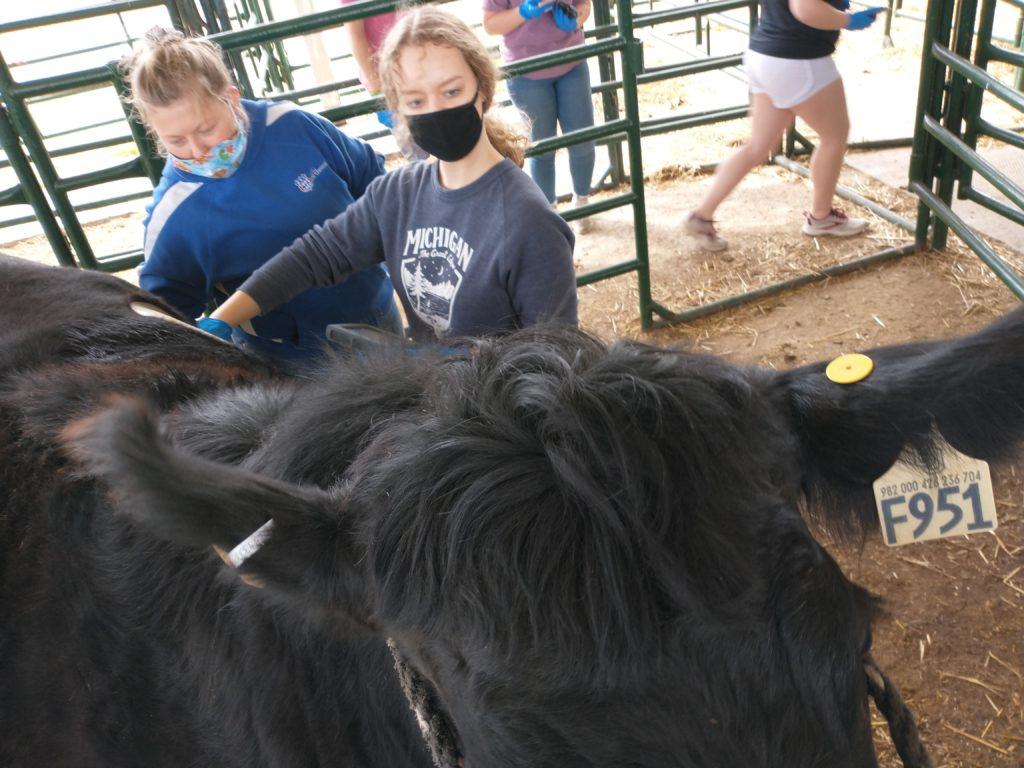Dr. Jerry Easdon is a proponent of inquiry-based, hands-on experiments to reinforce key concepts being taught in his General, Organic, and Biological (GOB) Chemistry courses. However, when he was unable to find appropriate and engaging experiments to teach about metabolism and fermentation, he utilized unique resources available at the College of the Ozarks, where he has taught for 35 years, and created his own.
The result? Two unique—and potentially once-in-a-lifetime—learning experiences for students.


Fermentation on the Farm
Located on a large farm, the College of the Ozarks is a work-study institution that is home to a dairy situated approximately two blocks from the chemistry classrooms. Dr. Easdon saw the opportunity to integrate what students were learning in class with the rich agricultural resources and livestock available on campus, including a fistulated cow named Tallulah, who was rescued from slaughter and has become a sort of cherished pet to the students and staff on campus.
After coordinating with the college’s agriculture department, students visited the dairy where they observed the fermentation and metabolism processes taking place inside of the cow, while collecting live data using Vernier CO2 Gas sensors, pH sensors, and temperature probes.
“If they wanted to participate, students could actually reach into the cavity of the cow and use the sensors to measure different values of the cow’s rumen fluid,” said Dr. Easdon. “They could even see the feed being processed inside the cow’s stomach chamber.”
“Students were also able to hear from Dr. Kevin Sargent, Assistant Professor of Agriculture, and our agriculture students made real connections to how chemistry related to the work they were doing,” continued Dr. Easdon. “This really complemented what we were learning in class and provided students with such a neat opportunity to really see—and measure—fermentation and metabolism processes in action. I think it’s something they’ll definitely remember.”

Getting Creative with Kombucha
In addition to hands-on data collection with Tallulah the cow, Dr. Easdon provided students with the opportunity to prepare kombucha and follow the production of the drink’s metabolites over time. This involved setting up a large-scale fermenter with O2 Gas sensors, CO2 Gas sensors, pH sensors, and ethanol sensors.
“Under low oxygen situations, fermentation can occur in a variety of foods and drinks,” said Dr. Easdon. “With this experiment, students worked in small groups to create their own variation of kombucha and measure different aspects of the fermentation process using Vernier sensors. This helped them experiment with different variables—such as using hard water versus soft water—and really understand what the fermentation process looks like.”
Throughout the fermentation process, students were able to collect and analyze pH and ethanol data and graph acetic acid and ethanol production using Logger Pro® software. “Students saw normal oxidative metabolism as O2 levels decreased and CO2 increased. As the oxygen level approached zero percent, ethanol started to show up and increase in concentration,” said Dr. Easdon.
Importance of Hands-On Experimentation
“Hands-on activities reinforce what’s being taught in lecture and provide a great way to engage students in scientific discovery,” said Dr. Easdon. “And, students are always drawn to activities that let them solve problems and make real-world connections in interesting ways.”
“Students are so creative and like to explore,” he added. “Oftentimes, if you just provide the technology, students can come up with really good experiments by themselves and take ownership of their learning.”
Dr. Easdon also encourages other faculty to seek out ideas and collaboration opportunities with other departments at their own institutions. “I have had many great suggestions for projects from my colleagues in art, family and consumer science, physical education, engineering, and psychology,” he said.
While entering retirement, Dr. Easdon plans to develop more hands-on experiments to support and inspire chemistry students at the college. “We have a good amount of data-collection technology available for students to access, so I want to continue to come up with ways for them—and myself—to innovate.”
Download Dr. Easdon’s Experiment Materials and Sample Data*
*These files were created exclusively by Dr. Easdon and are shared here as a courtesy for reference purposes only.
About the Educator
Dr. Jerry Easdon
College of the Ozarks
Point Lookout, MO
Focused on organic chemistry and biochemistry, Dr. Jerry Easdon has been a professor at the

